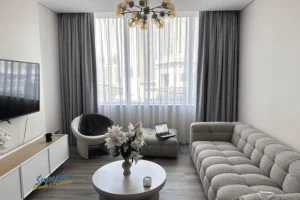Have you ever swooned over fabric patterns or clothing patterns? Or perhaps you bought something that didn’t really fit you because you liked the fabrics. Then, you might be a natural textile designer! It’s a job for creative thinkers who enjoy fashion and experimenting with art techniques. Designers ranging from William Morris to Cath Kidston have created stunning work that can be found on walls, clothing, bags, and furniture all over the world. But how do you break into the industry?
One of the most durable and functional aspects of decorative arts is the creation of appealing designs on fabrics. Fabrics with appealing designs have become an essential part of daily life. The art of creating designs for knitted, woven, and non-woven fabrics is known as textile design. It also includes fabric embellishments. This process entails creating patterns for clothes for household applications such as towels and carpets. Fabrics are created by weaving or knitting and decorated with printing.
Fabric design entails both the surface and structural design of the fabric. It is necessary to have a solid understanding of yarns, weaving, knitting, dyeing, and other finishing processes. Beautiful hues, prints, and patterns abound in the world of textile design. However, creating an eye-catching design is a more difficult and time-consuming task. A thorough understanding of the various aspects of textile production, market demands, and current trends is required. Three skills are fundamental for textile design: creative design, working with a proper color palette, and doing repeats. It is both challenging and profitable. Fabric design is an important skill to learn if you want to be a fashion designer. Do you want to know how they are related? Fabrics are used to make outfits, and the type of fabric used determines the patterns, designs, and many other elements that will complete the look of the dress.
The core aspect of textile design is the creation of fabric through the use of various techniques such as printing, weaving, tracing embroidery, and color detailing. Once the process has been conceptualized, virtual samples are created, followed by prototypes.
What does a fabric designer do?
Simply put, a fabric designer is someone who creates designs for woven, knitted, or printed fabrics used in clothing and interior design. They create designs that can be used for exclusive lines or, in most cases, repetitive manufacturing. Due to budget constraints, small businesses frequently overlook this type of design.
Investing in design work specifically tailored to your brand, on the other hand, will set you apart from the thousands of mainstream designs in the consumer market. A textile designer has many skills and can bring a wealth of knowledge to any fashion brand. Some of the key aspects they cover include:
- Creating presentation sketches and samples
- Communication with various teams or suppliers, such as manufacturers and buyers
- Interpreting brand concepts and ideas
- Using specialized software to help with the process
- Recommending best practices and design elements for selected fabrics
- Sourcing appropriate textiles based on brand specifications
- Knowledge of the industry and current trends
If these roles sound like things that interest you, maybe you should consider a career in fabric design. A successful career in textile design necessitates creativity, technical knowledge, research, data handling ability, and commercial understanding of the textile industry. The job requires a unique combination of creative and technical abilities. There are several freelance textile designers who can turn the ideas that a fashion designer has into marketable products, but other fabric designers design both the fabric and the ensemble. There are a variety of fabric designers and clothing manufacturers who can offer stunning fabric designs, expert advice, and design ingenuity.
What are the core aspects of fabric design?
It all begins with sketching your idea on paper, followed by finishing the design and then applying your Print design on fabric. The pattern could take many forms, including geometrical shapes, florals, checks, mythological characters, and many others. All of this is dependent on a textile designer’s choice and inspiration.
Learn The Basics
Being a textile designer entails more than just creating beautiful patterns and applying them to the fabric. First and foremost, you must learn how to design. That includes learning to understand client briefs and collaborate with other creatives, such as design teams. You’ll also need basic software skills in Illustrator and Photoshop, as well as basic drawing abilities. The Print School offers a series of classes and an array of knowledge, tips, and tricks to help you with these basics, as well as specific patterns and designs.
Color theory, textures, composition, pattern genres, and other elements of textile design, such as learning the characteristics of different fibers such as cotton, wool, nylon, and different types of polyester, will also be required. Excellent textile designers conduct extensive research and collect examples of interesting designs. Making a scrapbook of cool fabrics, unusual patterns, or even eye-catching lettering is a great place to start when looking for ideas.
Magazines, videos on a common social media platform, and even Pinterest are good places to start looking for inspiration. You can even try to discover your own art form and design style, which will help you find your path later on. However, in the beginning, be sure to experiment as much as you can with different fabrics and patterns. Once you have a solid design, you can move on to understand the different kinds of fabrics, and how each design translated into each fabric. This will help you when you are printing designs on fabric.
Understand The Different Kinds Of Textiles
You’ll need to understand how textiles work. Not all textile designers have a textile design degree. However, they will frequently have a background in something like art or surface design. This provides them with a solid foundation for applying their knowledge of color, composition, and style to textiles.
A textile designer must understand how textiles wear, hang, and last when transformed into other items. The final product is affected by its weight and even flammability. Products sold in various countries must comply with the fabric and flammability laws of the particular region. You’ll also need to experiment to figure out how fabrics retain color after dying. And embellishment is a great way to take a design to the next level.
Screen printing, transfer printing, digital printing, batik, marbling, block printing, and weaving are all techniques used by textile designers. They all have an impact on how a pattern appears on the finished fabric. Knowing which technique is best suited to which end result is useful when deciphering a client brief. Although knowing how to sew is not required, it does allow you to mock up sample textiles into products to see how they work in three dimensions. It is also necessary to be able to create client presentations so that you can communicate through sketches, illustrations, or verbal means.
Create A Portfolio
Employers look for designers with impressive portfolios. You must demonstrate your knowledge of the industry in which you are applying for work, as well as your original design ideas.
When you get a job in the industry, you’ll add designs to help you win contracts. The majority of designers have both a physical and digital portfolio. A physical portfolio will require at least 20 designs, and a digital portfolio will require at least 30. Include notes to explain the context for each design and to demonstrate your creative process. Employers adore seeing how your brain solves a creative problem and comes up with a beautiful solution.
You should be able to explain which techniques you used and why. All art is meant to tell a story so if you can explain your design choices by telling the story of how or why you chose a specific fabric, it catches attention. It is also good to have different pages with different styles and looks on hand so that you can tailor your portfolio to the tastes and aesthetics of whoever is viewing it. Having some form of personal branding will be a perfect way to tie your portfolio together because it not only provides an insight into your work but also an insight into your story so that prospective clients can view you as an individual separate from the crowd. It also allows you to highlight specific skill sets you have or a distinct aspect of your background that you would like to include. Personal branding should be used on your website, cards, social media, and wherever else possible.
Keep Your Skills Sharp
Choosing to work in textile design requires you to commit to keeping your skills current. You’ll need to learn to follow trends and, even better, predict them. The Print School has worked with the best of the best and created designs for some of the top-name brands in the industry. They have a slew of tips for printing designs on fabric and can help you with some Gouache Paisley techniques if you are ever in a dry spell. Websites like WGSN, Vogue, and other high-fashion sites and magazines can keep you up to date on where your industry is headed.
Your designs will always need to be current and cutting-edge. You must also learn new techniques or methods. New technology will emerge that will assist you in creating new designs or speeding up your process. It may be an overwhelming process initially, but once you conceptualize your ideas on paper or digitally, and understand the different fabrics and printing methods, you can create artistic, fun, trendy designs, and have the skills to print the designs on the fabric of your choice.






